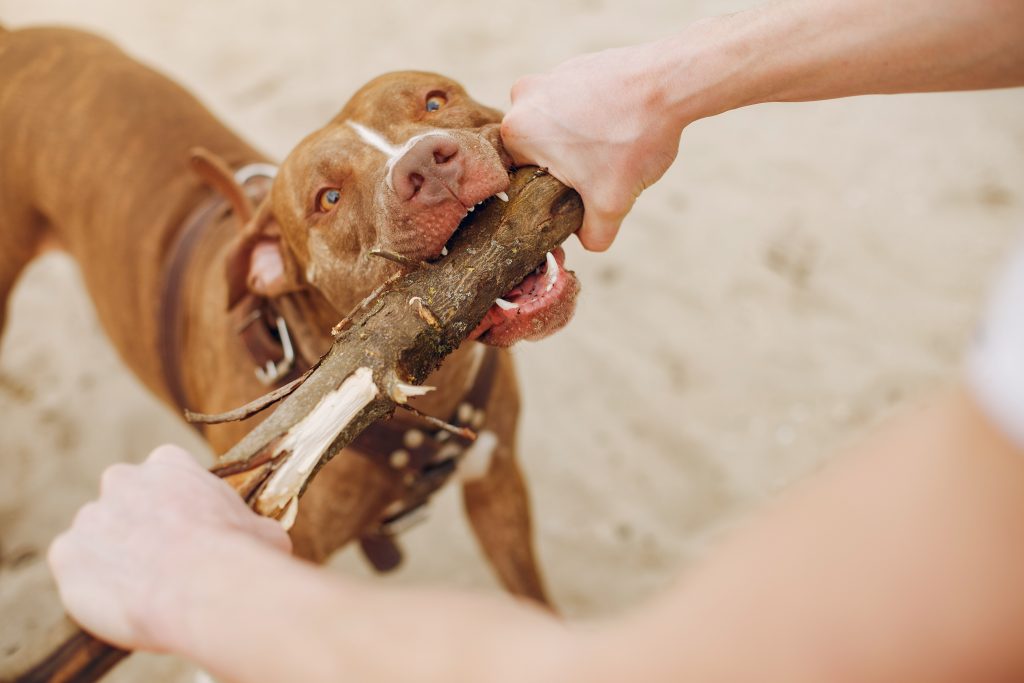This article will discuss the importance of positive reinforcement when training a Pit Bull. Positive reinforcement is an important part of dog training, as it can help make the process more enjoyable for your pet and show them that you are typically not going to punish them for making mistakes or doing what comes naturally.
What is Positive Reinforcement?
Positive reinforcement is a type of training that relies on rewards and positive reinforcement (e.g., petting, verbal praise, treats) to help an animal learn desired behaviors.
To be most effective, positive reinforcement needs to be given consistently, in the right amount, at the right time, and for the right behaviors. Not all rewards are effective with all animals; it is important to test different rewards on your pit bull to see what works best for them.
There are many benefits to using positive reinforcement in training:
-It is more likely that an animal will repeat a behavior if they enjoy the consequence of that behavior.
-It is easier to train multiple behaviors when the animal enjoys the consequence of those behaviors.
-Positive reinforcement can be used as a “building block” method of training; rewarding an animal for good behavior can eventually work your way up to harder tasks without having to use punishment first.
The Basic Principles of a Positive Reinforcement System
There is no doubt that a positive reinforcement system is one of the most effective ways to train your pit bull. By providing positive rewards and consequences for good behavior, you can encourage your dog to learn new commands, obey simple commands more quickly, and feel good about himself. Here are the basics of how a positive reinforcement system works:
When your dog does something you want him to do – such as sit, stay, come, or respond to a command – give him a treat or another special reward.
This will help him associate doing what you want with pleasure. If he does something you don’t want him to do – such as jumping on you or scratching the furniture – give him a verbal correction (such as “No”)
and then deliver a punishment – such as a time-out or sending him to his kennel. The goal is to establish clear rules and boundaries in your home and have fun!
Some Types of Positive Reinforcement
Positive reinforcement is a great way to help your pit bull succeed. It can be as simple as giving them a treat when they do something good or praising them whenever they make an effort.
Granted, not all pit bulls will respond to positive reinforcement the same way, but it’s worth trying out a few different things to see what works best for your pup.
One important thing to remember is that positive reinforcement should always be given positively. Saying “good job” after your pup jumps on command is great, but only if you mean it.
Saying “you’re such a good dog” every time they knock over a trash can will have the opposite effect and probably lead to them becoming discouraged.
Instead, try saying things like “nicely done” or “you’re amazing!” when they do something good. This will show them that you appreciate their efforts and hopefully encourage them to keep up the good work.
Different Forms of Punishments
Punishing a Pit Bull can be a very effective way to train them, but it must be done in a positive and constructive way. Here are some different forms of punishment that can be used with your Pit Bull:
-Negative reinforcement: When your Pit Bull does something you want them to do, give them a good treat or toy as a reward. This will help teach them that doing what you want is always good.
-Positive punishment: When your Pit Bull does something you don’t want them to do, give them a bad treat or toy as punishment. This will help teach them that doing what you don’t want is always bad.
-Extinction burst training: When your Pit Bull does something you want them to do, give them a little bit of positive reinforcement followed by an extinction burst (a sudden stop in the reward/punishment cycle). This will help increase their desire to obey and do what they want.
Conclusion
The key to positive reinforcement with your Pit Bull is patience and consistency. Remember, it takes time for a Pit Bull to warm up to you, so don’t expect immediate results.
Consistency is key – show your Pit Bull that good behavior leads to rewards, no matter how small. Above all, be patient and understanding – your Pit Bull will thank you for it!

